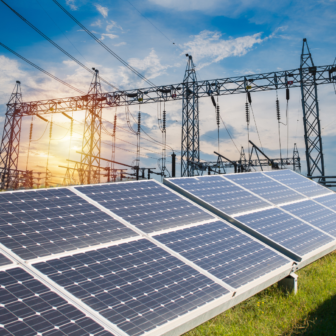The Baltimore Sun
By Mike Tidwell
You can’t even find your car on the street, the kids have been out of school for days, and “blizzard conditions” is now standard weatherman talk in the D.C.-Baltimore region. So if global warming is happening, why in the world are we literally buried in snow?
It’s a good question, and thankfully, the answer is pretty straightforward. In fact, the growing pattern of extreme snowfall in our region has the fingerprints of climate change all over it – even as temperatures steadily rise across America and the world.
Let’s agree on one thing: Our weather has been totally unrecognizable this winter. Of the ten heaviest snow storms ever recorded in Baltimore since 1870, three have occurred in the last seven weeks. Before this winter, the city had never gotten even two storms of 19-plus inches in a single season, much less a trio. And we’ve shattered the old record for snowiest cumulative winter ever here, 62.5 inches, set in 1995-96. Philadelphia and D.C. have posted very similar snow statistics.
No wonder people say it everywhere you go: “I never saw that before.” Collapsed roofs throughout the region. Kids in danger of going to school till July. Even snow plows shut down at one point because of wind and snow too fierce for safety.
How could global warming be driving a pattern like this? One word: moisture. A warmer atmosphere holds more water. Plus, warmer surface temperatures are triggering more evaporation of ocean water worldwide. That water goes up, up, up into that atmosphere. And what goes up must sooner or later come down.
This is precisely what scientific studies are now documenting. Water vapor in the global atmosphere jumped by about 5 percent in the 20th century, P.Y. Groisman and his colleagues reported in 2004. This while there has been an observed, significant uptick in heavy winter precipitation events in the Northeastern U.S., according to a 2006 study. And all the while, global temperatures have risen sharply, including an average warming of 4 degrees Fahrenheit in the Northeastern U.S.
Consider further: We’ve had “Snowmaggedon” I, II and III this winter not because of record cold weather. The temperatures in our region have been only moderately colder than normal for the Mid-Atlantic winter. No, it’s because of record amounts of moisture here, pushed into our region by repeated Nor’easters. This historic wetness from the south has met cold-enough temperatures here to produce snow levels that neither science nor old-timers can recall.
Just last fall, the U.S. Global Change Research Program, established by Congress in 1990, predicted more violent storms in the Northeast due to climate change. “Strong cold season storms are likely to become stronger and more frequent, with greater wind speeds and more extreme wave heights,” the agency said. So, yes, we are getting record winter precipitation events here even as overall temperatures are rising.
And, yes, there is the usual caveat: No single storm episode can be blamed definitively on global warming. But the overall trend – the shear freakiness of this winter weather – fits the pattern scientists say will only intensify with more warming.
But, you say, what about El Nino? The radio guy said an El Nino is the cause of the wacky snow. Well, yes, the planet is currently under a so-called El Nino cycle. This tends to bring above-average moisture to parts of North America. But this otherwise normal and ancient planetary weather phenomenon is itself changing. There’s good evidence that El Ninos are becoming more frequent and lasting longer as the planet warms, thus conforming to the overall pattern of increasingly extreme weather.
So what can we do about the climate threat? The Dec. 19 storm alone, after all, cost D.C.-area retailers more than $2 billion in lost sales.
Leading climate scientists say we must address the core problem: our overwhelming reliance on oil, coal and natural gas. These carbon fuels, when burned, produce carbon dioxide, which traps heat in the atmosphere.
Thankfully, the U.S. Senate may act soon. The smart and bipartisan “CLEAR Act” was introduced last December, just a week before the first big storm. It would limit and auction carbon pollution permits, invest part of the money in green technology, and rebate a full 75 percent of the permit money back to all Americans.
It’s the best global warming bill ever introduced in Congress, and one we desperately need as we eye yet another winter storm heading our way this week. Only a sane energy policy will, ultimately, address this truly insane weather pattern this is already battering our lives.
Mike Tidwell is executive director of the Chesapeake Climate Action Network.




